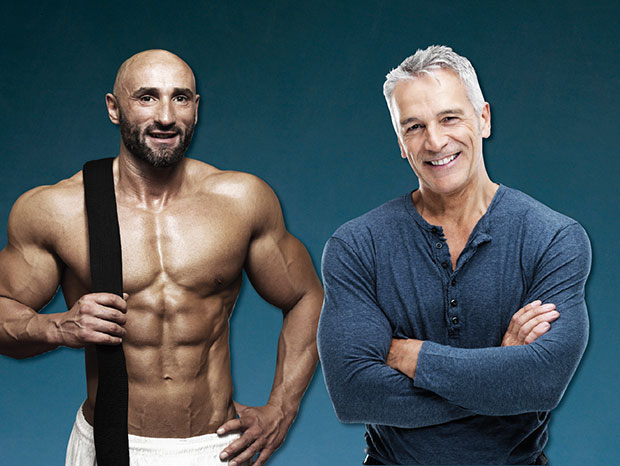Testosterone Replacement Therapy

Let’s face it, aging sucks. Your energy is drained. The muscle you’ve worked so hard to build is turning to fat. You can’t sleep at night, and when you do, your wife complains of your snoring. You’re moodier than a teenage girl, can’t concentrate, and have started to get hot flashes. To make matters worse, your sex drive and ability to get it up is, well … gone. Welcome to manopause.
But many of these issues can be completely avoided through the use of testosterone replacement therapy (TRT). Historically, testosterone (T) was used in high doses as an anabolic steroid by athletes and body builders; however, questions recently have arisen as to whether low doses of T might be helpful for middle aged and elderly men.
Testosterone decline is a natural part of the aging process. In fact, about a fifth of men over the age of 40 have testosterone levels below 300 ng/dL, which qualifies as “low T.” Often symptoms of low T are associated with, hypogonadism, which is the failure of the testes to produce normal levels of the hormone. Simply put, as you age, your nuts “slow down,” leaving you feeling older than Father Time.

A basic blood test will reveal whether or not you have low T; however, it’s important to remember that all TRT should take an informed, individualized approach. On top of blood work, a health care professional should also complete a thorough patient history, physical examination, prostate exam, and additional lab work.
If diagnosed with low T, you have options to how to administer the hormone. Gels, transdermal patches, buccal bioadhesive tablets, and intramuscular injections (testosterone enanthate or cypionate) are all commonly used, and each method has its own advantages and disadvantages. As TRT is legal when prescribed by a medical professional, treatment will be covered in part or in full by most insurance companies. After starting TRT, it’s key to continue to monitor your T levels every two or three months, not only to ensure the effectiveness of treatment but also to keep your overall health in check.
For many aging men, TRT will restore normal sexual function, improve libido, lessen feelings of fatigue, instill a sense of well-being, and improve bone density, muscle mass, body composition, and cognition—all which will improve the quality of life in a low-T patient, with many users reporting a generally more youthful feeling. Psychological improvements can start to take place anywhere from two to eight weeks after the start of therapy, but physiological changes may take a little longer, occurring in anywhere from four to six months.
It’s important to remember that like any drug, TRT has potential side effects associated with its use; however, the FDA approves the use of testosterone to treat the symptoms of hypogonadism and low T levels not only in older males but in men of any age. Only an individual can decide if the potential benefits outweigh its possible side effects.
So is testosterone the fountain of youth? That’s still up for debate within the medical community. TRT won’t turn back time or wash away all signs of aging, but it can help improve the symptoms of low T that many men face. Along with improving physical and mental abilities, boosting naturally declining T levels can also help prevent heart disease, hypertension, osteoporosis, and Type II diabetes.
Don’t settle for feeling, looking, and living anything less than you desire. Talk to your doctor about TRT, and at the very least, get your levels checked, because the bottom line is that boosting your T isn’t just about “anti-aging,” it’s about improving your health and the quality of your life.
For more info about testosterone replacement therapy, check out our Ask The Doc video series! He explains everything you need to know about TRT!

